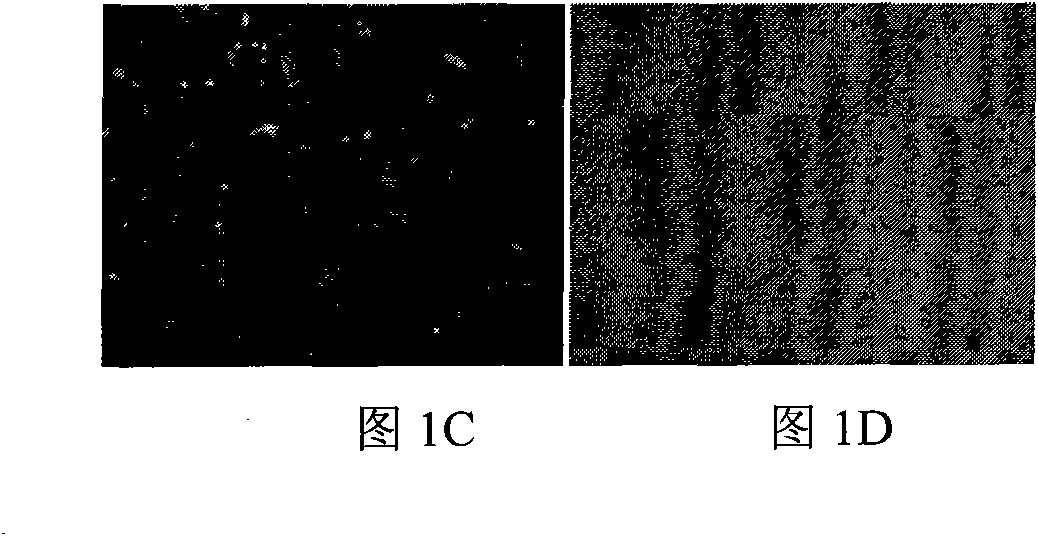Establishment of vitro transcription plasmids of 6 pig source key genes for maintaining self-renewal of stem cells
An in vitro transcription and key gene technology, applied in the field of genetic engineering, can solve the problems of low gene knockout efficiency, defective newborn piglets, and high abortion rate during pregnancy
- Summary
- Abstract
- Description
- Claims
- Application Information
AI Technical Summary
Problems solved by technology
Method used
Image
Examples
Embodiment 1
[0034] Example 1 Construction of gene in vitro transcription vector
[0035] 1. Determination of the sequence: According to the conditions of transcribing the gene into highly translatable mRNA in vitro, we selected the T7 promoter to initiate transcription; in addition, based on the literature and years of experience, we designed a 14bp CT sequence to enhance the transcription efficiency; finally, we inserted the gene A sequence containing an ATG initiation site was designed at the restriction site of mRNA to initiate mRNA synthesis. The sequence is shown in Figure 2: Figure 2A .In vitro transcription vector map; Figure 2B .In vitro transcription vector sequence 2 primer design, overlap extension PCR and connection with T vector: According to the designed sequence, we designed 2 pairs of overlapping primers, in which P1 and P2 overlap by 10bp, each containing 35 bases. P3 and P4 overlap the products of P1 and P2 by 7 bases, each containing 30 bases. The annealing tempera...
Embodiment 2
[0036] Example 2 Acquisition of control gene EGFP and cDNA of 6 key genes that maintain stem cell self-renewal
[0037] 1 Sequence determination and primer design: Query EGFP and pig Oct4, Sox2, c-Myc, Klf4, Nanog, Lin28 mRNA sequences in the NCBI database, and then design PCR primers to amplify their sequences. Oct4 (NM_001113060.1), Sox2 (NM_001123197.1), c-Myc (NM_001005154.1), Klf4 (NM_001031782.1), Nanog (NM_001129971.1) and Lin28 (NM_001123133.1). Primers are designed according to the sequence obtained from the query and the optimal principle of correct expression. Both ends of the primers have endonuclease sites (NcoI, EcoRI and NheI) for connecting the in vitro transcription vector.
[0038] 2RT-PCR and connection with T vector: 20-day-old embryos were flushed out of pregnant sows, ground in liquid nitrogen, followed by RNA extraction, and then reverse transcribed. Then, using the reverse transcribed cDNA as a template, 6 PCR amplification of the genes to obtain cDNA...
Embodiment 37
[0039] Example 37 Connection of Gene to In Vitro Transcription Vector
[0040]Digestion of 17 genes and in vitro transcription vectors: Oct4-T plasmid was digested with EcoRI and NheI, Sox2-T, c-Myc-T, Klf4-T, Nanog-T and Line8-T plasmid were digested with NcoI and NheI . Then electrophoresis, cutting the gel, and recycling. The in vitro transcription vector was also digested with corresponding enzymes. Then, the restriction fragments of the seven genes were ligated with the in vitro transcription vector, transformed, and identified by shaking bacteria.
[0041] Linearization of the in vitro transcription vector of 27 genes: The in vitro transcription plasmid of the correctly identified 7 genes was cut with NheI to make it linearized, so as to facilitate the in vitro transcription.
PUM
 Login to View More
Login to View More Abstract
Description
Claims
Application Information
 Login to View More
Login to View More - R&D
- Intellectual Property
- Life Sciences
- Materials
- Tech Scout
- Unparalleled Data Quality
- Higher Quality Content
- 60% Fewer Hallucinations
Browse by: Latest US Patents, China's latest patents, Technical Efficacy Thesaurus, Application Domain, Technology Topic, Popular Technical Reports.
© 2025 PatSnap. All rights reserved.Legal|Privacy policy|Modern Slavery Act Transparency Statement|Sitemap|About US| Contact US: help@patsnap.com



